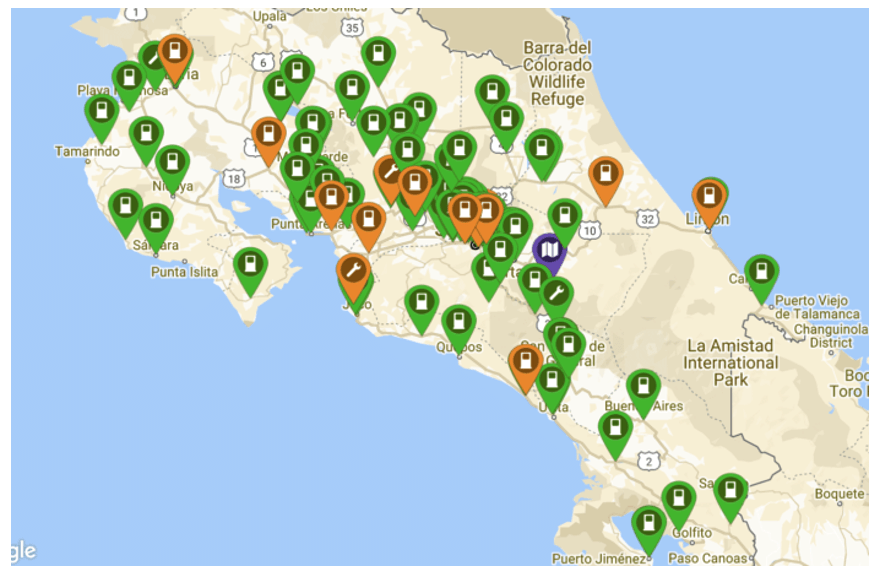A brief summary compiled by Martin Mowforth
April 2019
In recent months both El Salvador and Costa Rica have begun to take steps towards reducing air pollution from vehicles. As all visitors to the region are well aware, there are many locations and times of day in the region’s cities where and when the air is unbreathable due to excessive vehicle emissions.
Costa Rica’s President Carlos Alvarado has signed decrees to incentivise electric and zero emission vehicles and to promote mobility by other modes of transport. The First Lady, Claudia Dobles, who is leading the initiative, said, “We are incentivising zero-emission technologies with the aim of achieving our goal of decarbonisation whilst at the same time enabling the population to make use of more sustainable and efficient transport.”
The Costa Rican decrees also promote actions such as the provision of shower facilities at work for those who travel to work by bicycle. Bus and train travel are also promoted along with car-sharing, the use of hybrid vehicles and increased recharging locations for electric vehicles.
In El Salvador, the National Council of Environmental Sustainability and Vulnerability (CONASAV by its Spanish initials) has presented a series of reforms to the Land Transport Law. In essence the reforms aim to reduce atmospheric pollution in the country.
After establishing that current levels of air pollution have reached dangerous levels, the CONASAV reforms focus particularly on the reduction of emissions by public transport and allow the police force to confiscate vehicles which exceed specific thresholds of pollutant emissions. The reforms also recommend the replacement of public service vehicles that are over 20 years old and that this new measure should be implemented within three years.
The World Health Organisation has placed El Salvador among the Latin American countries with the highest levels of atmospheric contamination and has associated these levels especially with public transport.
Panamá is also looking for strategies to lower vehicle emissions and the Guatemalan Union of Car Importers is now seeking legislation to lower the age of imported vehicles. In Guatemala more than 2 million vehicles are older than 2008. The Union’s proposals would limit the age of imported cars to 10 years, 15 years for trucks and SUVs and 20 years for commercial vehicles such as tractors. The appropriate legislation, however, is not yet very far up the political agenda in Guatemala, where some of the buses on the streets are over 30 years old. Many of these are imported from the United States and are sometimes referred to as ‘zombie clunkers’ having been modified after import. Often the modifications reduce the effects of safety features.
Far from addressing the dangers of exporting clunkers, the US Environmental Protection Agency (EPA) under the Trump administration hopes to freeze fuel efficiency standards at 2020 levels. The UK also plays a role in the used vehicle market. According to the Centre for Remanufacturing and Reuse, 50% of British heavy vehicles reaching end-of-life are reused or resold in other countries after refurbishment.
Sources:
- El Economista, 7 November 2018, ‘Costa Rica emite decretos para incentivar uso de vehículos eléctricos’.
- La Prensa Gráfica, 8 January 2019, ‘Proponen que PNC pueda remitir vehículos por contaminación de aire’.
- Sebastián Rodríguez, 25 February 2019, ‘Costa Rica launches ‘unprecedented’ push for zero emissions by 2050’, Thomson Reuters Foundation.
- Martha Pskowski, 24 January 2019, ‘Zombie clunkers: has your local bus been resurrected in Guatemala?’ The Guardian.
- Fien Van Den Steen, 6 July 2018, ‘Guatemala, the end of using cars until the end?’ Global Fleet.
